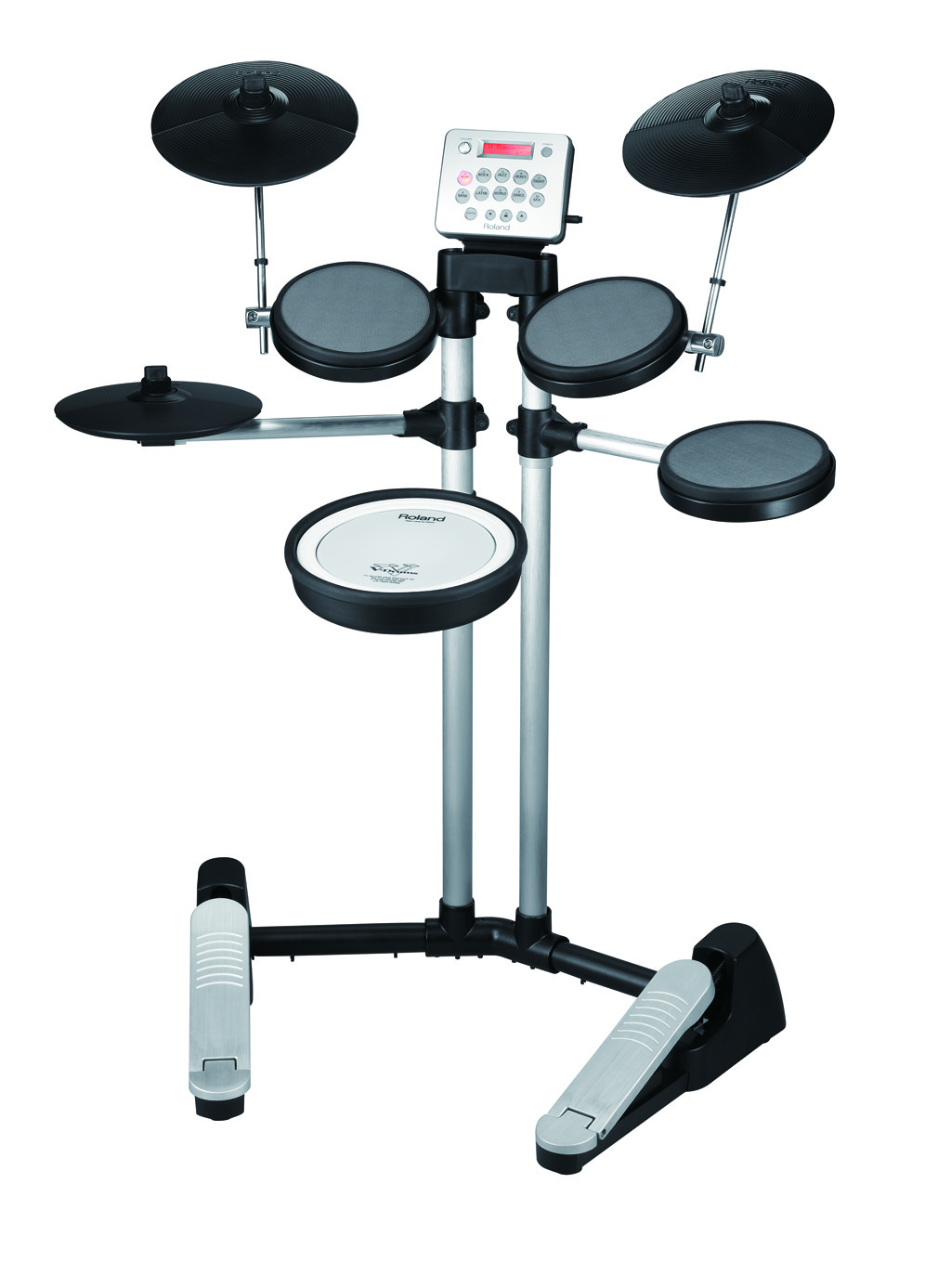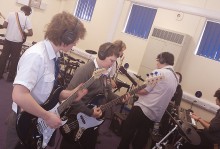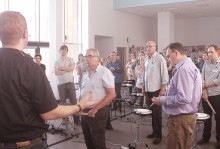So the time has come to upgrade that old drum kit. The skins are battered and pitted and the cymbals look like dust bin lids. Drum kits seem to be like classic car, no matter how much time you spend on them it never seems to be enough. What normally happens is you choose one of two paths dependent on your character:
- You buy the cheapest kit you can because you know you will be replacing bits within a term
- You buy the most expensive kit you can afford in the hope that quality rules the day
The interesting thing is, both paths can work as well as each other because both paths need one more ingredient for success. Drums, like drummers, need tender loving care! I have heard the cheapest kit sound amazing and the most expensive kit sound terrible. Why you ask? Three things:
-
Quality drum skins tuned properly
(This isn’t as hard as you think, contact me if you need help: dan@mixmusiceducation.co.uk there will be a post on this right here very soon)
-
Quality drum sticks used in the correct way
(This is a little more challenging as it comes down to the musicians who are hitting the drums. Do not let anyone who doesn’t know how to play the drums hit your set. If you have a hoard of budding drummers desperate to play your kit or kits every break time, you must install some ground rules. Again I’m happy to help here too, a well run lunch time drum club could see your students taking lessons increase and preserve the life of your investment)
-
Good quality hardware
(Hi hat stand, cymbal stand, bass drum pedal and drum stool. Again this doesn’t have to cost the earth but it will reap huge rewards in the life span of your kit if you do get quality here. I have found top of the range Stagg to be very good, Big Dog is exceptional and Mapex hardware is my choice for all our education partners its not let me down yet)
Back all the above up with some monthly TLC from a trusted student or your visiting drum teacher if you have one. But, there is another path to follow. For many years I choose not to tread this path, to many drummers this is the dark side epitomised. This path leads to electric drums……
There, I’ve said it, yes, electronic drum sets. Years ago they were a figure of ridicule but over the last 5 years things have got quite exciting. The problem has historically been the cost and the sounds within the drums kits brain (this is the electronic bit that controls the sounds made when the pads are hit). Many brands tried to get around this problem by lower the cost of their gear, but with the price drop came a drop in quality. Most notably in the hardware, which as we have already established is vital. The sets have also been historically covered in wires with things that drop off, generally a very unpleasant place to be!
All that changed a few years ago with the launch of the Roland HD-1 drum set. The boffins in Japan made a kit that didn’t break the bank, came with a 3 year warranty and that housed most of the wires inside the frame. It sounded good, but no great, the bass pedal was very unresponsive for more advanced students, the pads were hard rubber and hurt your elbows after intense playing. We were on the right road but we were not there yet.
Launch of the HD-3
In 2012 Roland launched an upgrade to the HD-1. I have to admit my excitement was muted to say the least. I could not see a way they could resolve the few issues with the HD-1. My company started to supply the HD-3, I even installed one personally in a school in Wales but I never took the time to get my head under the bonnet, until now.
Build Quality and Usage
For my money the build quality relates to how easy the kit will be to use and I have to say with the HD-1 and the HD-3 it is impressive. The frame of the HD-3 is very similar to its predecessor and you can see why. Everything other than the pads is metallic and comes straight of the box virtually ready to play. You slide in the feet, screw in four bolts (drum key is provided) and the kit is up and ready to go. The only thing left to do is fold out the arms, each one holding a drum pad or a cymbal holder. You then place on the cymbal pads and tuneable snare drum, connect in the wires which all hand so close to the relevant pad you would have to be crazy to miss them and you are away. I had my kit up and ready to play in 10 minutes. When you compare that to the 1 hour it takes me to set up other kits, this is exceptional workmanship.
This kit comes with built in bass drum and hi hat pedals which saves a tidy sum when compared to other kits. Designing the drums this way also keeps everything really tidy and makes it difficult to lose anything. The final job before you start to play is to attach the brain, it slots in easily and stays attached with two screws.
All in all the build quality is superb, the kits frame is proven to be really durable and some subtle improvements have made a world of difference to its predecessor.
Using the HD-3
After using the HD-1 the first thing that jumps out at you is the quality of the sounds. Roland has upgraded everything about the sounds the kit makes, the new sounds are absolutely knock out. There are also more of them, the HD-1 featured 10 sounds, the HD-3 has 20, all of which are really appropriate to the styles of music most students want or aspire to learn. Pop, rock, jazz, heavy metal, latin and a range of world percussion are evident each with variations on there kits accessed by pressing one button. The snare sounds in particular sound beautiful with different effects applied to each different kit, the reverb on the rock and heavy drum sounds was brilliant. The world percussion sounds fit brilliantly too with the requirements of the classroom music curriculum.
Two slight problems still exist, the frame of the kit, whilst extremely sturdy, rocks a little as you play. Also, whilst the bass drum pedal response has been improved, it still struggles to pick up some of the nuances of semi quaver rhythms and fast syncopations. All that said if you work hard, you can get the beats out you need, so in my opinion this actually aids practise!!
The toms have had a complete overhaul. On the HD-1 the pads were fairly hard rubber, on the HD-3 they have changed to a much softer rubber easing the strain on your elbows. This also gives the heads much better response, they feel much more like real skins. The general set up of the toms and the whole kit is very compact, to look at it I worried initially if I would feel cramped on the kit. This was an optical illusion, sitting behind the drums and playing felt really natural. I measured the distance between the drums on my acoustic set and differences aren’t much more. Where things can feel compact is with the cymbals. Most drummers will have an array at all different heights. The HD-3 has three cymbals all fairly low. You can adjust the heights of all pads and cymbals but only within the confines of the frame. Some students may sit behind the kit therefore and feel a little hampered with their cymbal work. From a drum tutors point of view having the cymbals close together is really how they should be, so getting your students used to this approach will actually pay dividends when they get back onto their own drum sets.
Performing with the HD-3
Now let me be clear here, the HD-3 is designed to be used as a home practise tool, performance was not high on the specification. The kit comes packaged with no external sound source e.g. their is no speak for others to hear the set. There are two output sources, both iPod or mp3 headphone jack size. This is ideal for use with drum lessons as the tutor and the student can hear the kit perfectly, but what if you want to use the kit for a performance. Here you would need some external amplification, I have used the kit with both a Roland BA330 Stereo Speaker and a Samson 8” powered monitor. To connect the kit you need a stereo mini plug to phone plug lead. Click here to see a video of the HD-3 in action.
When connected the kit sounds great. Turning it up loud will give you more than enough sound to perform solo or in a band or orchestra. Really heavy drummers may feel it lacks some power but this is due to the output from the brain. To get around this connecting a simple DI box gives you a load more power to play with.
Practising with the HD3
Practise time is a joy with this kit. You can connect your MP3 player or iPod easily which enables you to play along with your favourite music. The new brain, with digital display, also houses a really easy to use metronome, perfect for perfecting those beats. The only thing lacking is the ability to record your work but if you connect up any MP3 recorder to the output this is rectified.
Summing Up
I am a percussionist and a purist, I love real live instruments. The energy and excitement created by live percussive instruments is really difficult to simulate. But times have changed and kits are now available that get close. I personally would never gig an electronic set, but if I was running a busy music department on limited resources, I would definitely purchase electronic first followed by an acoustic kit of I had the budget.
The beauty of the HD-3 is its ease of use and its durability. Knowing it had a three year warranty, remember that doesn’t cover wear and tear, would give me immense peace of mind. From a drummers perspective too it makes sense. Unless you have a technician experienced in keeping your drum kit working, it makes much more sense to give your students something they can play immediately with little or no MOTing and additional work.
Pricing online comes in at around £449.17 ex VAT which isn’t cheap. But, if you fit the criteria we spoke about earlier (terrible drum kit, constantly broken, know one to take of it), in the long run this approach will save you money in repairs and you will benefit from the warranty. I am converted to electronic as the right way forward when practising. The HD-3 keeps you engaged, it makes you want to play it! If you decide to go electronic you won’t go far wrong with this kit. Personally I wouldn’t buy anything else.
Dan Jones, Mix Music Education
Dan Jones is Managing Director of Mix Music Education & a former Music Teacher of the Year. Dan also sits on the British Dyslexia Association Music Committee as a specialist in appropriate technologies for multi sensory learning. Roland V-Drums form a key part of Mix Music Educations JamPod™ & JamClassHD projects. Free educational resources are available here

The Roland HD-3 Drum Set








